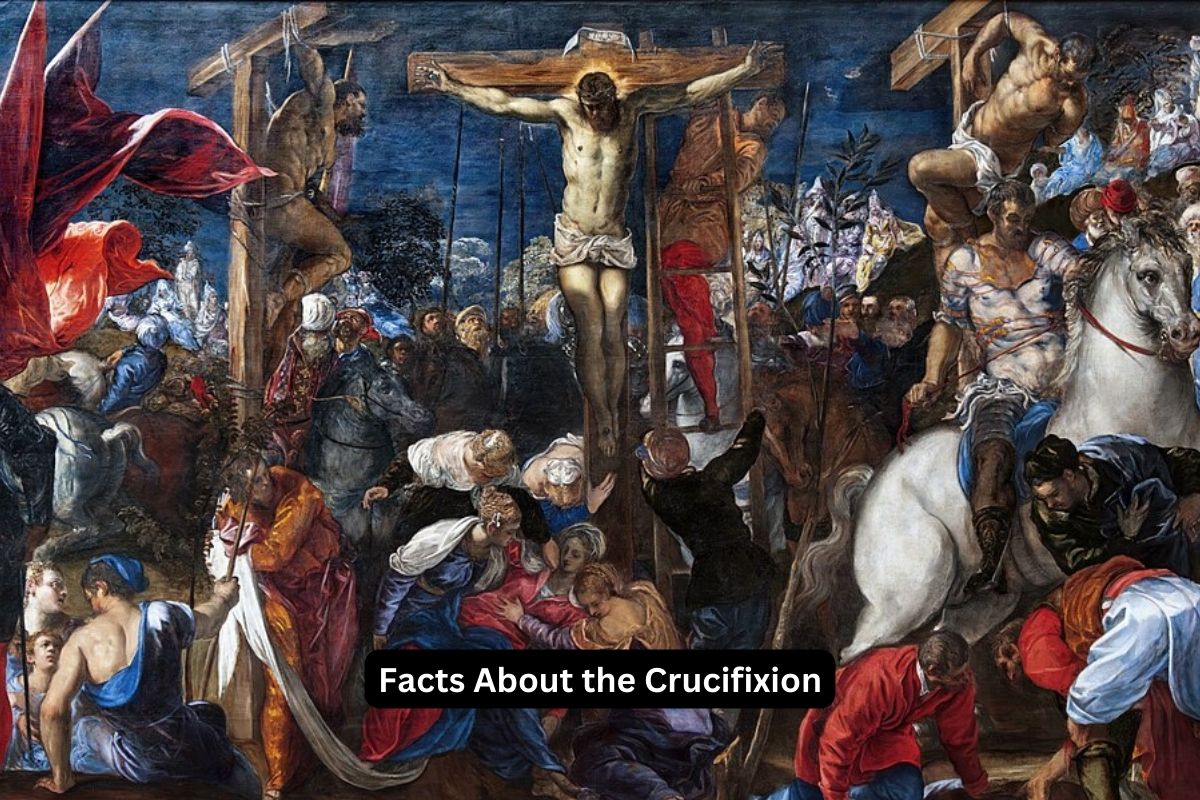The crucifixion of Jesus Christ is a pivotal event in both Christian theology and world history. It marks the culmination of his life and ministry, symbolizing his sacrificial atonement for the sins of humanity.
This profound and significant event took place in Jerusalem during the 1st century AD and has had a profound and enduring impact on religious, cultural, and historical aspects of Western civilization.
In this discussion, we will explore some key facts and details about the crucifixion, shedding light on the historical and theological significance of this event.
Crucifixion Facts
1. Common Roman execution method
Crucifixion was a widely used method of execution in ancient Rome, especially for those who were considered criminals or threats to the Roman order.
It was a gruesome and public form of punishment that involved affixing the condemned person to a wooden cross.
Also Read: Facts About The Last Supper
The purpose was not only to inflict extreme physical pain but also to serve as a deterrent to potential wrongdoers and dissidents. Crucifixion was intentionally brutal, serving as a means of both punishment and humiliation.
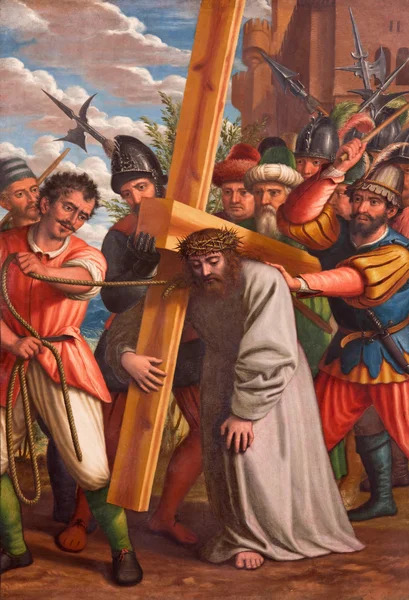
2. Central event in Christianity
The crucifixion of Jesus Christ is one of the central events in Christianity. It is believed to have occurred in the 1st century AD and is considered the pivotal moment in Christian theology.
Christians believe that Jesus, who they consider the Son of God, willingly sacrificed himself on the cross to atone for the sins of humanity.
Also Read: Timeline of the Crucifixion of Jesus Christ
This act of self-sacrifice is seen as the means through which believers can attain salvation and eternal life. The crucifixion is commemorated annually on Good Friday and is a fundamental part of Christian doctrine.
3. Wooden cross used for crucifixion
In crucifixions, the condemned person was typically nailed or tied to a wooden cross. The form of the cross used for crucifixions could vary, with different designs like the Latin cross (the familiar “t”-shaped cross), the Tau cross (resembling the Greek letter tau), and others.
The specific shape of the cross used in Jesus’ crucifixion has theological significance in Christianity and has become a symbol of the faith.
The crucifixion on the cross is seen as the ultimate act of love and redemption by Christians, and the cross itself is a widely recognized symbol of Christianity worldwide.
4. Occurred at Golgotha
According to the New Testament accounts, Jesus’ crucifixion took place at a location called Golgotha, which means “the place of the skull” in Aramaic.
This site is traditionally believed to have been a hill or a raised area just outside the city walls of Jerusalem. The choice of Golgotha as the location for the crucifixion may have been symbolic or practical.
Symbolically, it could represent the idea of Jesus conquering death or the association with the skull as a reminder of human mortality. Practically, crucifixions often took place along main roads or outside city walls to serve as a warning to onlookers.
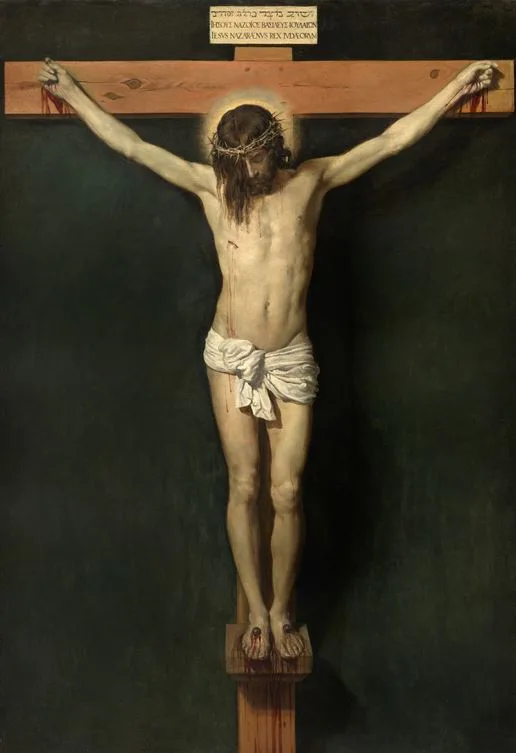
5. Ordered by Pontius Pilate
Pontius Pilate was the Roman governor of Judea at the time of Jesus’ crucifixion. According to the Gospel accounts, he ordered the crucifixion of Jesus despite finding no guilt or wrongdoing in him.
The pressure from religious leaders and the crowd played a significant role in Pilate’s decision. Pilate’s role in the crucifixion has been a subject of theological and historical discussion, as it raises questions about his motives and the political dynamics of the time.
6. Involved scourging before crucifixion
Prior to being crucified, it was customary in Roman crucifixions to subject the condemned person to a brutal scourging.
This involved whipping the victim with a scourge, which was a multi-tailed whip embedded with sharp pieces of bone or metal. The purpose of scourging was to weaken the victim further and inflict severe pain and suffering.
For Jesus, this scourging would have added to his physical agony, and it was a common precursor to crucifixion. The brutal nature of scourging was meant to serve as a deterrent and a form of public humiliation.
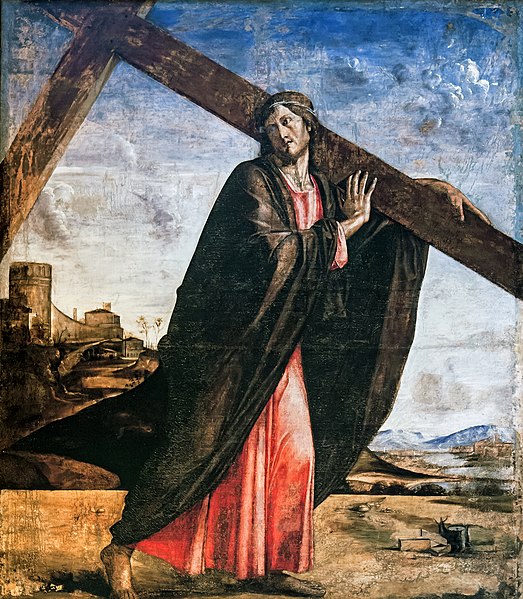
7. Slow and agonizing death
Crucifixion was a particularly cruel and protracted form of execution. The condemned person was nailed or tied to a wooden cross and left to hang there for an extended period.
The process of dying on the cross was slow and agonizing. Several factors contributed to the suffering:
- As the body hung on the cross, the victim’s own weight would cause strain on the chest muscles, making it difficult to breathe.
- Nails driven through the hands or wrists and the feet would cause intense pain.
- Dehydration and exposure to the elements added to the torment.
- Blood loss from the wounds and the scourging further weakened the victim.
The combination of these factors made crucifixion one of the most excruciating forms of capital punishment.
8. Crown of thorns placed on Jesus
Before Jesus was crucified, according to biblical accounts, Roman soldiers mockingly placed a crown of thorns on his head. This crown of thorns was intended to inflict additional pain and humiliation.
The soldiers also dressed him in a purple robe and taunted him, further emphasizing his mockery as a king. This event is a significant part of the Passion narrative, symbolizing the suffering and rejection that Jesus endured.
9. “Seven Last Words” spoken by Jesus
According to the Gospels, during his crucifixion, Jesus spoke seven phrases from the cross, which are collectively referred to as the “Seven Last Words.”
These statements are considered highly significant in Christian theology and devotion, and they reflect various aspects of Jesus’ experience and mission. Some of the well-known phrases include:
- “Father, forgive them, for they know not what they do” (Luke 23:34).
- “My God, my God, why have you forsaken me?” (Matthew 27:46).
- “It is finished” (John 19:30).
These utterances are often meditated upon and preached about during Holy Week and Good Friday services in Christian tradition.
10. Darkness and earthquake during the crucifixion
According to the Gospel accounts, there was darkness over the land from noon until 3 pm on the day of Jesus’ crucifixion. This supernatural darkness is seen as a symbol of the gravity and significance of the event.
Additionally, at the moment of Jesus’ death, an earthquake occurred, which is described in the Gospel of Matthew (Matthew 27:51-54). The earthquake and darkness are considered divine signs or manifestations emphasizing the momentous nature of Jesus’ sacrifice.
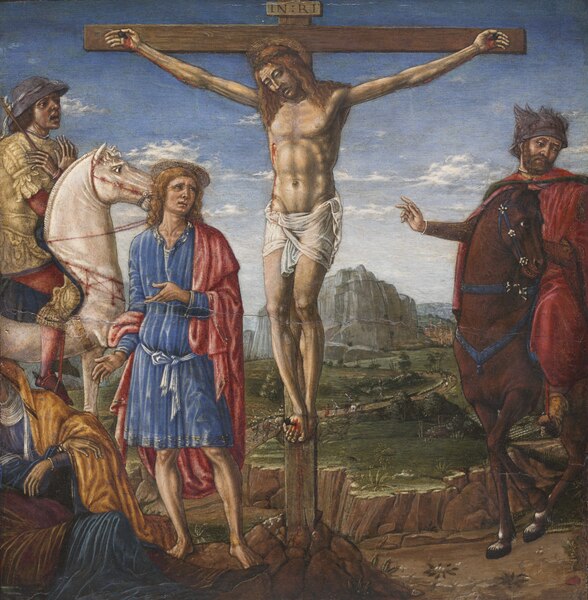
11. Witnessed by a crowd
Jesus’ crucifixion was a public event, and it was witnessed by a diverse crowd of people. This crowd included various individuals, such as:
- Jesus’ disciples, including John and Mary, the mother of Jesus.
- Roman soldiers who carried out the execution.
- Jewish religious leaders who had played a role in Jesus’ arrest and trial.
- Onlookers and passersby who were in Jerusalem at the time, as crucifixions were often carried out in highly visible locations to serve as a warning.
- Criminals who were crucified alongside Jesus.
The presence of this crowd adds to the dramatic and communal aspect of the crucifixion, where people from different walks of life witnessed the event and reacted in various ways.
12. Spear thrust to confirm death
After Jesus had been hanging on the cross for some time, a Roman soldier thrust a spear into his side to confirm that he had indeed died. This was a common practice in crucifixions to ensure that the condemned person had not survived or faked their death.
The Gospel of John (John 19:34) describes this event, noting that blood and water flowed from Jesus’ side, which has been the subject of theological interpretation. Some see it as a symbol of the sacraments of baptism (water) and the Eucharist (blood) in Christianity.
13. Jesus’ body placed in a tomb
Following his crucifixion, Jesus’ body was taken down from the cross, and it was placed in a tomb. According to the New Testament accounts, Joseph of Arimathea, a wealthy follower of Jesus, provided the tomb for the burial.
The burial of Jesus is an important part of the Passion narrative, as it sets the stage for the subsequent belief in his resurrection. Christians commemorate this event as part of the Easter story, which celebrates Jesus’ triumph over death and the hope of eternal life.
